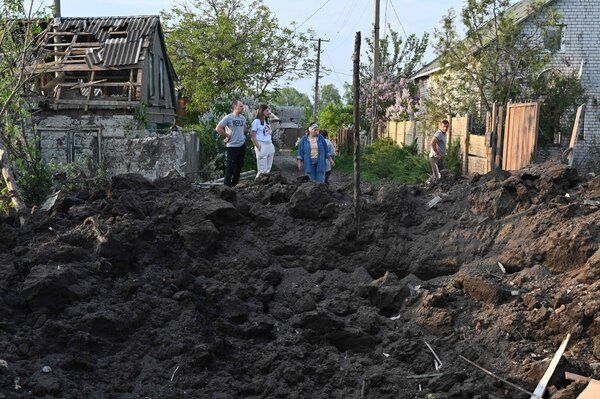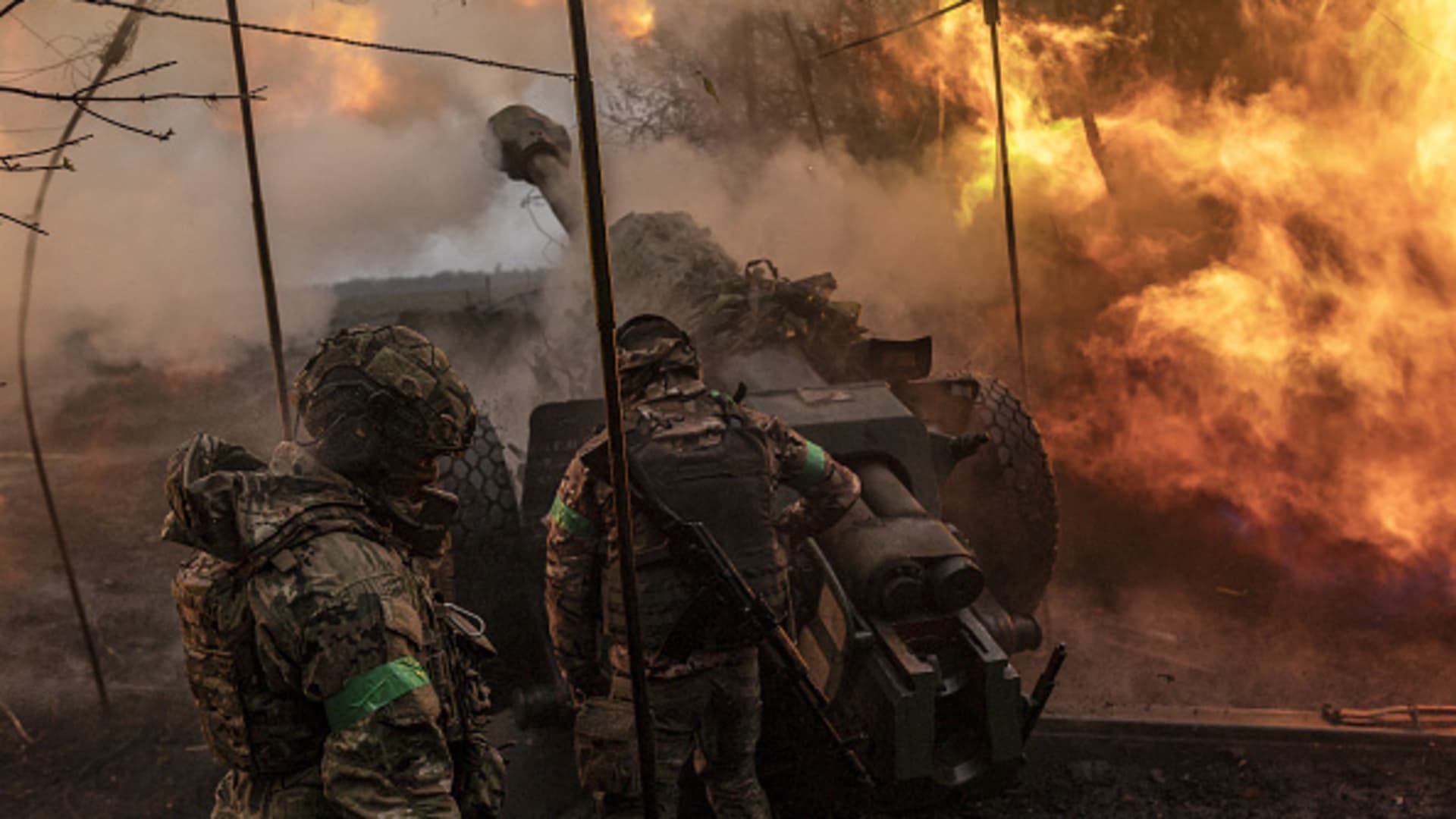Ukraine News: Zelensky to Attend G7 Summit in Japan
Image Investigators on Thursday in the Crimea region of southern Ukraine, which Russia illegally annexed in 2014 and uses as a logistical hub, after an explosion derailed a freight train carrying grain. Credit... Associated Press
The third derailment this month of a Russian train behind the front lines in the war in Ukraine suggests that a new sphere of operations may have opened ahead of a planned counteroffensive by the Ukrainians.
Russia has made extensive use of the rail network during its full-scale invasion, ferrying troops, weaponry and supplies into battle as well as evacuating wounded soldiers. In response, Ukraine has found ways to target the rail system either through sabotage, or drone or missile strikes.
But military experts caution that it is too early to assess the impact of the attacks.
“Whether the attacks will reach sufficient effect to contest Russian operations — we have yet to see,” said Mathieu Boulègue, a Russia expert and consulting fellow for Chatham House, a research group based in London. “It’s all about whether it starts to have a systemic effect.”
Ruslan Leviev, a Russia military analyst with the Conflict Intelligence Team, an independent group that analyzes open-source intelligence, said that the three rail attacks would do almost nothing to compromise Moscow’s military logistics.
“This is more of a gain in a moral sense,” Mr. Leviev said. “In the spirit of ‘Look, we can blow up targets deep in Russian territory.’”
In the latest apparent attack early Thursday, an explosion knocked a freight train loaded with grain off the tracks in the Crimean region, a logistical hub for Russia. Earlier in May, two trains were derailed in Russia’s Bryansk region, which borders northeastern Ukraine.
There were no injuries in the Crimean derailment, said Sergei Aksyonov, Crimea’s Russian-installed governor, in a post on the Telegram messaging app. He later said that repairs had been conducted and the lines would reopen on Friday.
Image Self-propelled Russian howitzers being loaded onto a train car outside Taganrog, Russia, in February 2022, two days before the full-scale invasion of Ukraine. Credit... The New York Times
Ukraine has remained coy about the causes of explosions and attacks on infrastructure in Russia or occupied territory, but a senior Ukrainian official offered a rationale on Thursday for strikes on the rail network.
“On those tracks in particular, weapons, ammunition, armored vehicles and other means used for the war of aggression against Ukraine are transported,” Andriy Yusov, a spokesman for Ukraine’s military intelligence agency, said on Ukrainian television.
When Moscow was building up its forces on the Ukrainian border in 2021, analysts tracked public railroad databases to monitor the buildup — until the authorities restricted access. Indeed, the growth of the rail network was driven by the army’s needs, according to Mr. Boulègue, who described rail as the “central nervous system” of the military.
Russia has since 2018 been able to service its military in Crimea, which it illegally annexed in 2014, through a rail and road bridge that connects the region to Russia.
An explosion that damaged the bridge last October forced Moscow to seek alternative routes. Ivan Fedorov, the exiled governor of the southern Ukrainian city of Melitopol, said in an interview that only 30 percent of the supplies that passed through the city’s railway now came from Crimea.
Russia has made use of a dedicated railway corps of around 25,000 soldiers to repair damaged tracks, signals or stations, said Emily Ferris, a research fellow and Russia expert at the Royal United Services Institute in London.
She said that the system had, so far at least, proved resilient.
“Blowing up a bit of track with a drone might cause a bit of damage, but it won’t be catastrophic,” Ms. Ferris said.
Still, the exposed infrastructure has proved to be a prime target for saboteurs. MediaZona, a Russian independent news outlet, last month published a tally of 66 people — most of them Russian citizens in their teens or early 20s — who had been detained in 21 Russian regions since last fall on suspicion of railway sabotage.
Anton Troianovski contributed reporting.
Source: The New York Times


